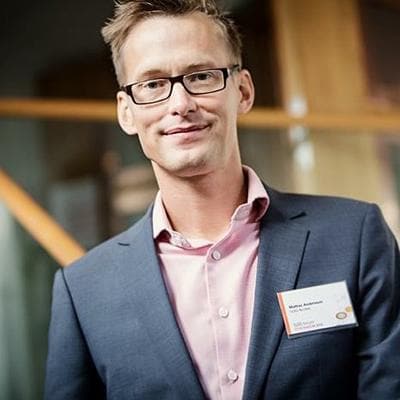Data scientists trained at SAS Institute give Scandinavian Airlines a clearer understanding of customers
Scandinavian Airlines has taken a great step towards working cross-functionally and breaking up its knowledge silos. By training analysts at SAS Institute’s Analytics Value Training for Data Science Program, the airline has made its analysis division more independent and has improved its analytics capabilities.
“Data scientists” – the people who help organizations with sophisticated data analysis – are in short supply. According to a survey from data mining company CrowdFlower, 83 percent of all data scientists think that there is a scarcity of people in their own profession. This number exemplifies the great need companies have for this type of specialist.
It is a need that has not been met despite the fact that, according to the American career site Glassdoor, “data scientist” is a profession with the highest average salary in the U.S. right now, and publications such as Harvard Business Review have bestowed data scientist with the title of “sexiest profession of the 2000s."
The goals that form the foundation for Scandinavian Airline’s change journey include getting a better understanding of customers and making the analysis process more efficient. Rather than focusing only on Eurobonus members, data from all customers is now included in the analyses. Scandinavian Airlines wants to better understand how to optimize sales in both their own as well as external channels.
Now that my colleagues have a stronger theoretical background, I have a sounding board and better support for driving the change necessary to reach goals in our organization Mattias Andersson Head of CRM Analytics Scandinavian Airlines
In order to achieve these goals, the company took the quality of analyses up a level, while simultaneously working with even more statistical models to create insight about the future.
With tools that they can manage themselves, the analysts now have more time to devote to future modeling and predictive analysis.
Now the organization also has access to dynamic dashboards, which let the employees do simpler types of analysis themselves.
Silos – a huge challenge for Scandinavian Airlines
Like most other large organizations, the division of knowledge into silos was one of Scandinavian Airlines’ greatest challenges. Before, important information was not shared between divisions and there was no established cooperation with those who had digital analysis competence.
For example, it happened that the team who was responsible for the website worked on customer behavior analysis in that channel, while the e-mail marketing team worked to understand the same customer group, with the only difference being how those customers behaved in a different channel.
In order to take advantage of the other team’s work and to avoid double effort, Scandinavian Airlines has now taken the first step towards establishing a cross-functional team where the work is centered around the customer, rather than around the company’s internal divisions.
Two data scientists who will be key people in these projects have been trained at SAS Institute’s Analytics Value Training for Data Science-program.
“SAS Institute’s program for training data analysts is unique in Sweden. There is no other program that combines analytical and business knowledge in this way,” says Mattias Andersson, Head of CRM Analytics at Scandinavian Airlines, and responsible for customer analysis at Scandinavian Airlines.
By training his own people Mattias added the following competencies to his team:
- Improved analysis quality
- Clearer and easier-to-understand visualization of the analyses
- Communicative knowledge of how to formulate important messages
- Business perspective
Thanks to Analytics Value Training for Data Science Program we can design our own models, which allows us to be more independent and reduce the number of consultant hours from now on Mattias Andersson Head of CRM Analytics Scandinavian Airlines
Better in-house knowledge will reduce dependency on consultants
Through the program, Scandinavian Airlines’ work with visual analysis has improved considerably, and in several places within the company employees and managers can now use interactive applications to manage and analyze their own data. The goal is that Scandinavian Airlines should not need to use as many consultants in the future now that they have modeling competence in-house.
“Another important reason for training our people has been access to the network they have now gained through the training. For us, it is very valuable to get insight into how other organizations work and what other ideas are out there when we are working to solve the same challenges. Having a team of educated and competent employees also means that I have greater support and a sounding board for driving the change that is necessary for reaching the organization’s goals,” says Mattias Andersson.
CHALLENGE
Double efforts and inefficient work methods when knowledge silos obstruct Scandinavian Airline’s analysis capabilities.
SOLUTION
Training of three employees at SAS Analytics Value Training for Data Science in order to insource and centralize analysis.
RESULTS
Less dependence on consultants, tools that the organization’s employees can use themselves, and greater analysis insight.


